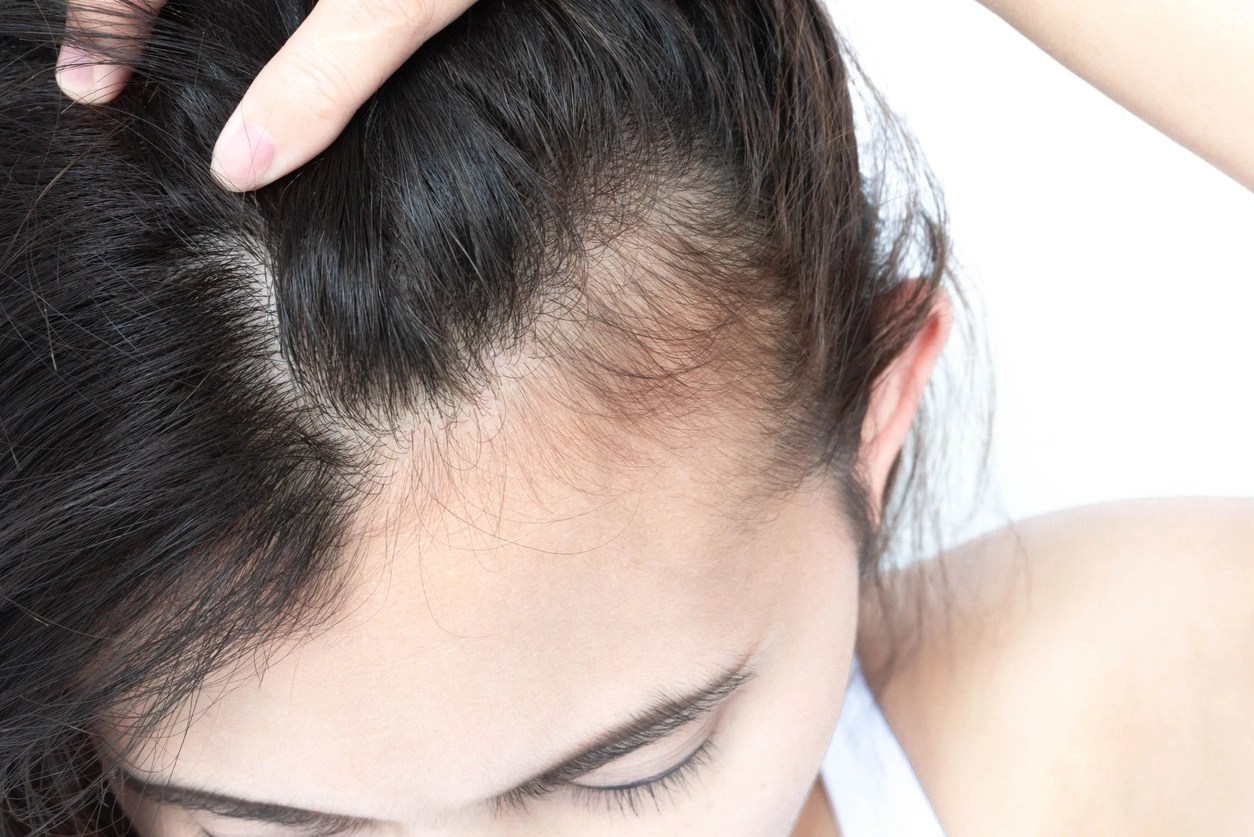Female hair loss treatments are on the rise

Hair loss can be a distressing condition, particularly for women who may experience genetic hormonal thinning over time. As a treating clinician or therapist, it is important to understand how to diagnose and treat this condition effectively.
We caught up with Dr Shyamalar Gunatheesan, founding Dermatologist of ODE Dermatology and hair regeneration expert, to explore the causes and diagnostic criteria for female pattern hair loss, as well as various treatment options that can help to address the condition.
Dr Theesan, what is female-pattern hair loss?
Female pattern androgenic alopecia is a diffuse progressive patterned hair loss that women suffer from, as much as 50% of women will experience this genetic hormonal thinning over the years, which can be very distressing for patients.
How is it diagnosed?
It’s diagnosed clinically with a widened central part and thinning of the crown, and we also see this miniaturisation phenomena where the skin is wispier, more dehydrated, it’s not as thick and dense.
What causes it?
We know genetics play a big part, it’s also the genetic susceptibility of our androgens to our hair follicle, in particular the hair bulb. So we have circulating testosterone and 5-DHT, which is a conversion of testosterone to 5-DHT via the 5-alpha reductase pathway. This will attach to our intra-follicular androgen receptors and cause these changes.
It terms of targeted therapy that works for Female pattern androgenic alopecia, we look at anti-androgenic medications such as ciprofloxacin, spironolactone, bicalutamide – these stop that miniaturisation process. The hallmark of treatment however, is to grow the hair back, and that’s been found with topical or oral minoxidil. This works to increase the nitrous oxide in the blood, thereby causing more vasodilation to the hair follicles and rejuvenation of the stem cells. At Ode Dermatology, we use exosome technology and growth factors which are injected into the hair follicle to try to change it at a cellular level.

For treating clinicians or therapists that work with non-surgical devices, we suggest red light LED. This causes a boost to the mitochondria of the cells abundant in the area, which will boost the hair follicles’ capability to regrow through means of rejuvenation. Certain lasers, such as non-ablative lasers like those in the 1927nm wavelength have been shown to improve hair growth.
The wellness measures also matter, not so much for Female pattern androgenic alopecia but for general hair condition thinning such as telogen effluvium which is a reactionary hair loss. In this case, checking iron levels, vitamin D levels, zinc, thyroid dysfunction and menstrual irregularity.
We do also have to consider the emotional stress that is involved in hair thinning, and we also suggest really investigating to see if there may be any underlying autoimmune condition. Seeking help early is key, seeing a dermatologist with a sub-speciality in hair loss is also paramount.
What won’t improve this condition?
In terms of what won’t work, massaging the scalp continuously or using ingredients such as argan oil, rosemary oil etc. won’t address the genetic component. What we aim with our intervention therapy is to prolong the growth phase of the hair follicle, being anagen. Treating dandruff also won’t address the female pattern thinning, because as mentioned there is a genetic and hormonal component that must be correctly addressed.
The post Female Hair Loss Treatments Are On The Rise appeared first on SPA+CLINIC.
